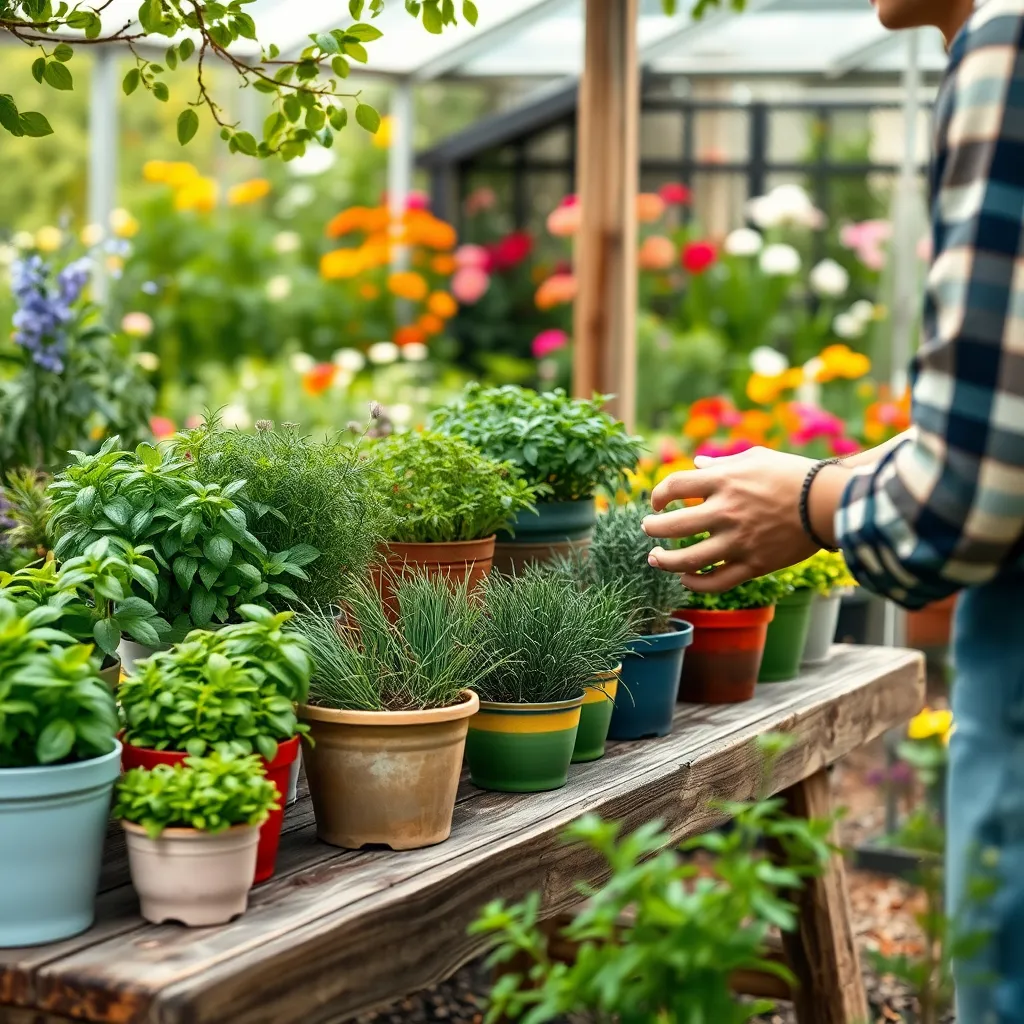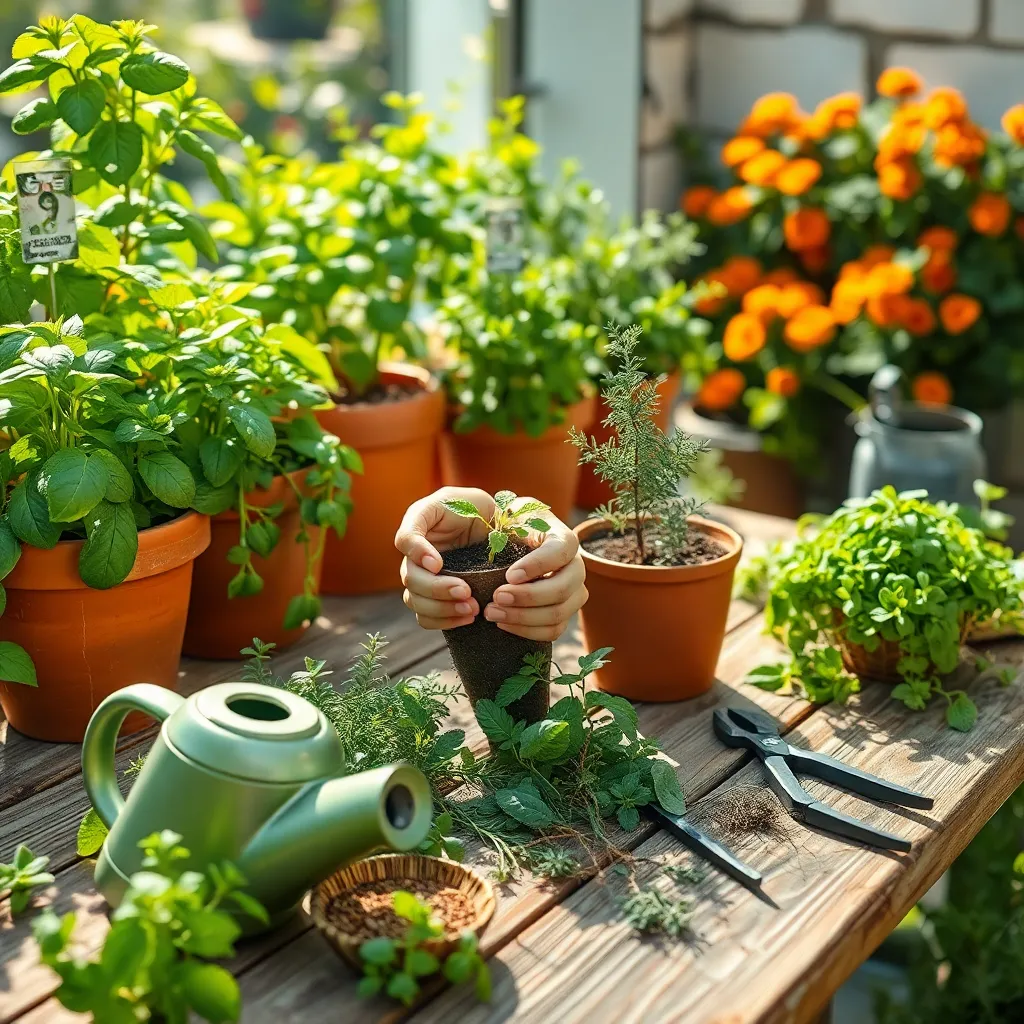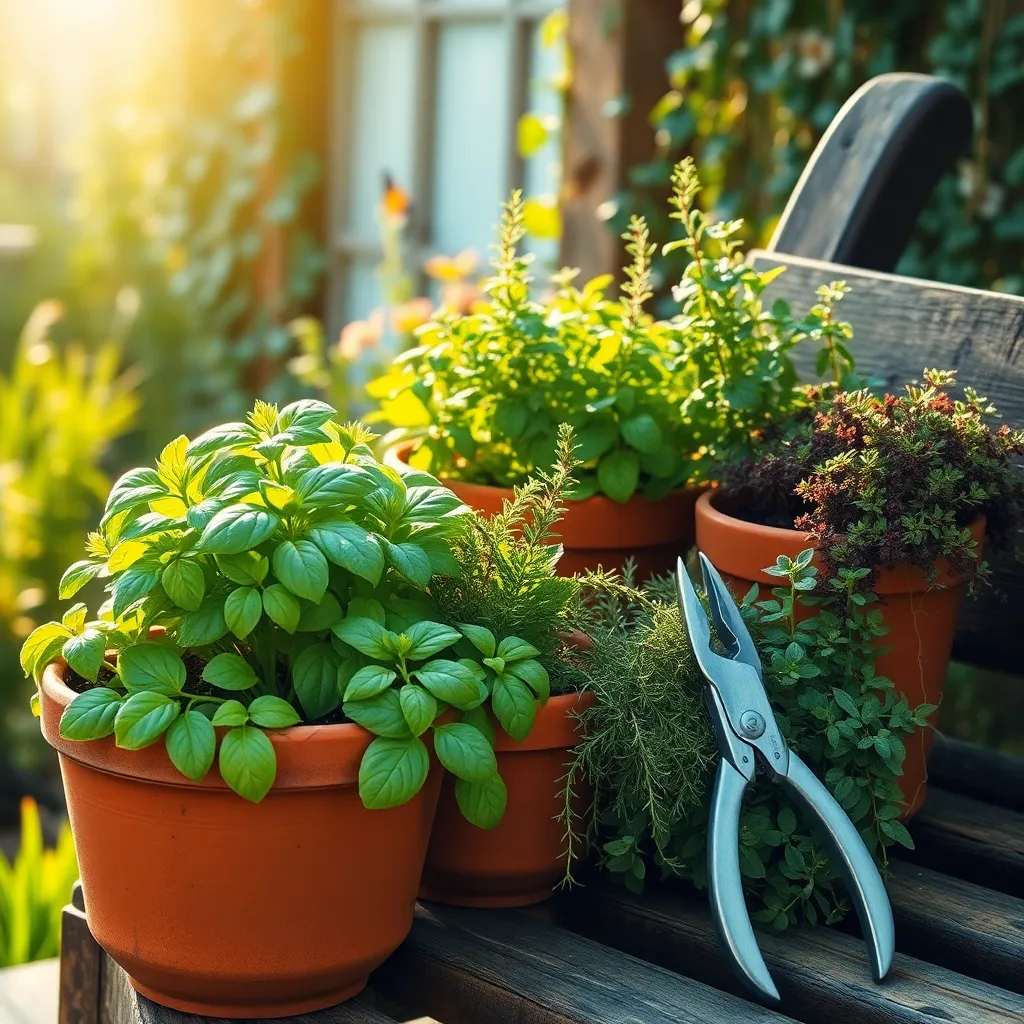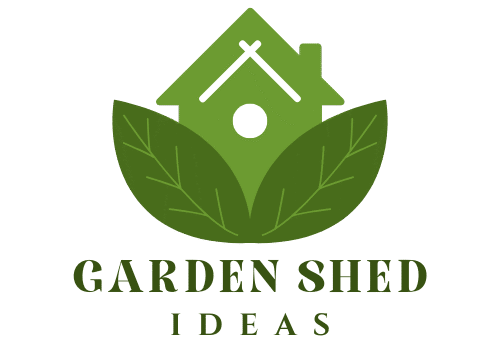Cultivating your very own herbal haven at home can be a deeply rewarding endeavor, whether you’re a seasoned green thumb or just beginning your gardening journey. With the right guidance, you can transform even the smallest of spaces into a thriving pot of nature’s most versatile plants, filling your home with delightful aromas and flavors. Herbal plants are not only a beautiful addition to your living space but also offer practical benefits such as enhancing your culinary creations and supporting your well-being.
Potted herbs are a fantastic choice for those who may not have ample garden space—perhaps you’re nurturing your plants on a sunlit balcony or a cozy windowsill. Whether you’re aiming to add a touch of greenery to your home or eager to experiment with fresh ingredients in your kitchen, growing herbs in pots provides a flexible and rewarding experience. In this article, we’ll explore a selection of herbal plants that flourish in containers, offering tips and insights to help them thrive, from selecting the right pots to understanding their watering needs.
You’ll discover how to create the perfect environment for your herbs, ensuring they receive just the right amount of sunlight and nutrients. We’ll guide you through the selection of ideal herbs for pot growing, such as aromatic basil, resilient rosemary, and soothing chamomile. Whether you’re seeking to enhance your cooking skills, create homemade remedies, or simply enjoy the beauty of nature indoors, this guide will empower you to cultivate a lush and vibrant potted herb garden with confidence and ease.
Top Herbs for Container Gardening

Container gardening is a fantastic way to grow herbs at home, especially if you’re short on space. One of the top choices for container gardening is basil, which thrives in well-draining soil and sunny spots.
Ensure your basil receives at least six hours of sunlight daily and water it regularly to keep the soil moist but not waterlogged. For beginners, a good tip is to use a pot with drainage holes to prevent root rot, which can be a common issue with basil.
Mint is another excellent herb for containers due to its vigorous growth and ease of care. It prefers partial shade and consistently damp soil, making it perfect for those who might forget to water regularly.
To prevent mint from becoming too invasive, it’s ideal to keep it in its own pot. Advanced gardeners might consider planting different varieties of mint, such as spearmint or peppermint, to experiment with flavors.
Rosemary is a hardy herb that does well in pots and can be brought indoors during colder months. This herb needs a sunny location and well-drained soil, as it is susceptible to root rot if overwatered.
Pruning rosemary regularly will encourage bushier growth and a more robust plant. For those looking to enhance their container gardening experience, try using a terracotta pot, which helps maintain optimal soil moisture levels.
Choosing the Perfect Pot

When choosing the perfect pot for your herbal plants, consider the size of the plant at maturity. Herbs like basil and mint require larger pots with a depth of at least 12 inches to accommodate their root systems and ensure healthy growth.
A pot with adequate drainage is essential to prevent root rot in your herbs. Look for containers with multiple drainage holes at the bottom, and consider placing a layer of pebbles beneath the soil to enhance water flow.
Material matters when selecting a pot, as it can influence soil temperature and moisture retention. Terracotta pots are excellent for herbs as they naturally wick moisture away, thus preventing overwatering, while plastic pots retain moisture longer and are ideal for hotter climates.
To maximize space and create a thriving herb garden, consider using vertical or tiered planters. These designs allow you to grow multiple herbs in a compact area, providing easy access and efficient use of space, especially on a small balcony or patio.
Ideal Potting Mix for Herbs

To cultivate healthy herbs in pots, it’s essential to use a potting mix that provides excellent drainage and aeration. Herbs generally thrive in a mix of two parts potting soil, one part perlite, and one part coarse sand.
For beginners, purchasing a pre-mixed potting blend designed for container gardening can simplify the process. These blends often contain balanced nutrients and are ready to use, making them ideal for those new to gardening.
Maintain consistent moisture levels, but avoid overwatering, as herbs dislike soggy roots. Watering when the top inch of the soil feels dry to the touch usually works well for most herbs.
Experienced gardeners might enhance their potting mix with organic matter such as worm castings or well-aged compost. This not only improves soil fertility but also boosts the microbial activity, which promotes healthy plant growth.
Caring for Potted Herbal Plants

When caring for potted herbal plants, it is crucial to monitor their watering needs, as containers can dry out more quickly than garden beds. Aim to water your herbs when the top inch of soil feels dry, ensuring the pot has proper drainage to prevent waterlogging.
Providing adequate light is another key factor for healthy herbal growth. Most herbs thrive with at least six hours of sunlight a day, so place them on a south-facing windowsill or under grow lights if natural light is insufficient.
Feeding your herbs with the right nutrients helps them flourish in pots. Use a slow-release fertilizer or apply a diluted liquid fertilizer every month during the growing season to maintain their vigor without overwhelming them.
Regular pruning and harvesting not only keep your herbs bushy and productive but also prevent them from becoming leggy. Pinch off the tops of the plants regularly, which encourages branching and a fuller appearance.
Harvesting Herbs from Containers

Harvesting herbs from containers is an enjoyable and rewarding activity that can be done continuously throughout the growing season. When you harvest, aim to pick herbs in the morning after the dew has evaporated but before the sun is too hot, as this is when their flavors are most concentrated.
For best results, use clean, sharp scissors or pruning shears to avoid damaging the plants. It’s important to cut the stems just above a leaf node to encourage the plant to produce new growth, ensuring a steady supply of fresh herbs.
Beginner gardeners should start by harvesting no more than one-third of the plant at a time. This practice helps the plant maintain enough foliage to continue photosynthesis, promoting healthy, vigorous growth.
Advanced gardeners can experiment with successive harvests, which involve cutting back herbs like basil or mint more frequently. This technique not only keeps herbs productive but also prevents them from flowering too soon, which can alter their flavor.
Some herbs, like chives or parsley, can be cut all the way back to the base, as they will regrow quickly from the roots. In contrast, woody herbs like rosemary should only have their new growth trimmed, as cutting into older wood can hinder future growth.
To store your harvest, consider drying or freezing herbs to preserve their flavor for later use. Hanging herbs upside down in a dry, well-ventilated area is a simple way to dry them, while freezing chopped herbs in ice cube trays with a bit of water or olive oil is a great method for maintaining their fresh taste.
Conclusion: Growing Success with These Plants
In nurturing relationships, much like growing herbal plants in pots, we must consider the essential components that allow them to thrive. First, recognizing the importance of communication is akin to ensuring plants receive adequate sunlight. Next, setting boundaries parallels using the right-sized pot, allowing roots—and relationships—to grow without constraint. Third, mutual support, like consistent watering, ensures vitality and resilience. Fourth, personal space mirrors the soil quality, providing the nourishment needed for individual growth. Finally, adapting to change, just as plants adjust to seasonal shifts, is vital for enduring connections.
To immediately enhance your relationship, choose one concept to focus on today—perhaps initiating a meaningful conversation or respecting your partner’s need for space. Remember, small, consistent actions lead to flourishing bonds.
Bookmark this article for future reference, as the insights shared here will continue to guide you on your relationship journey. By keeping these concepts close, you’re not just tending to the present but sowing seeds for future success in your relationships. Embrace the journey with confidence, knowing that with care and attention, both your plants and relationships can bloom beautifully.

